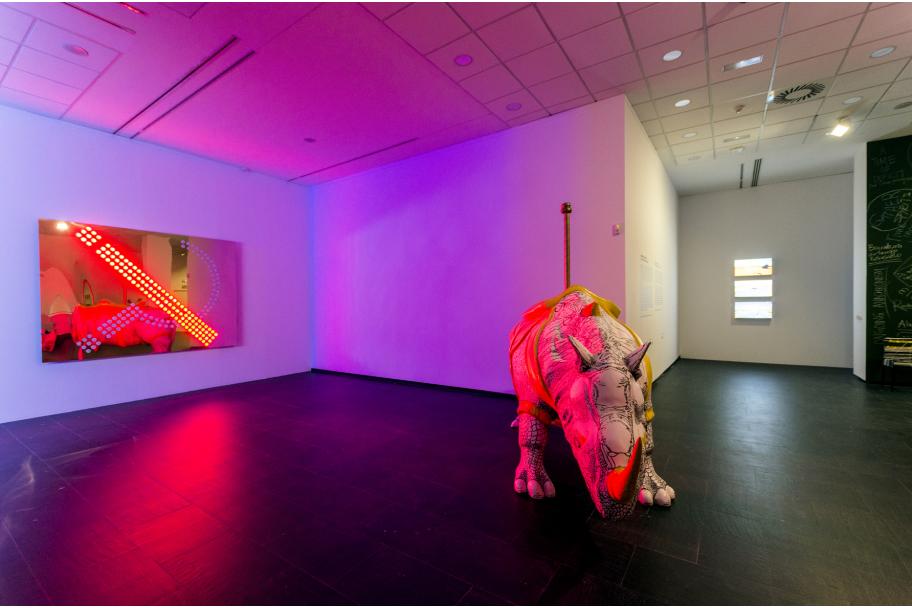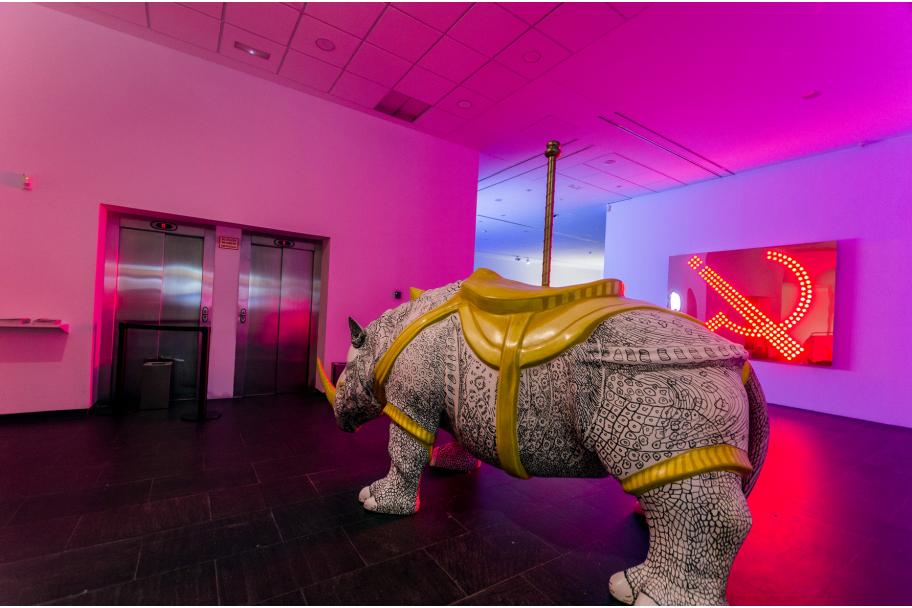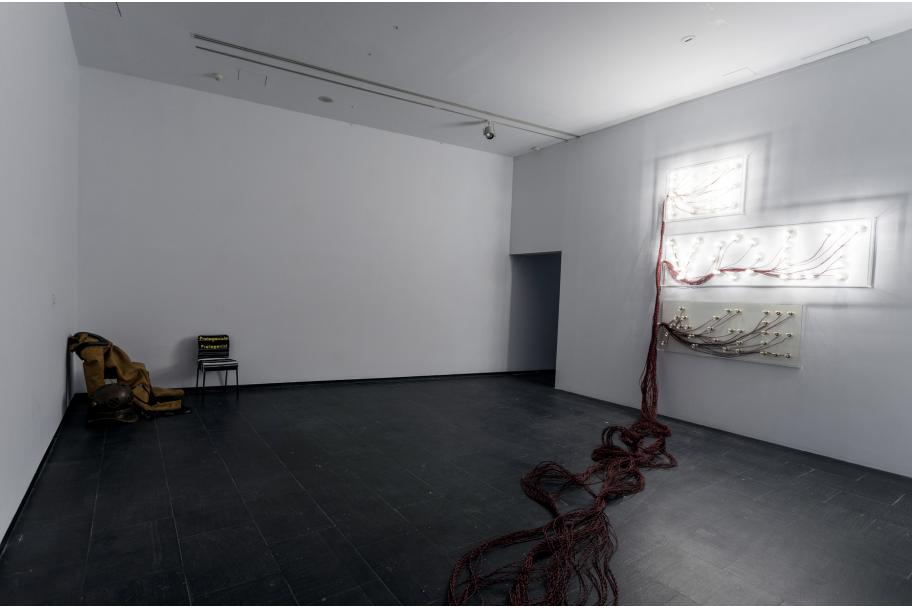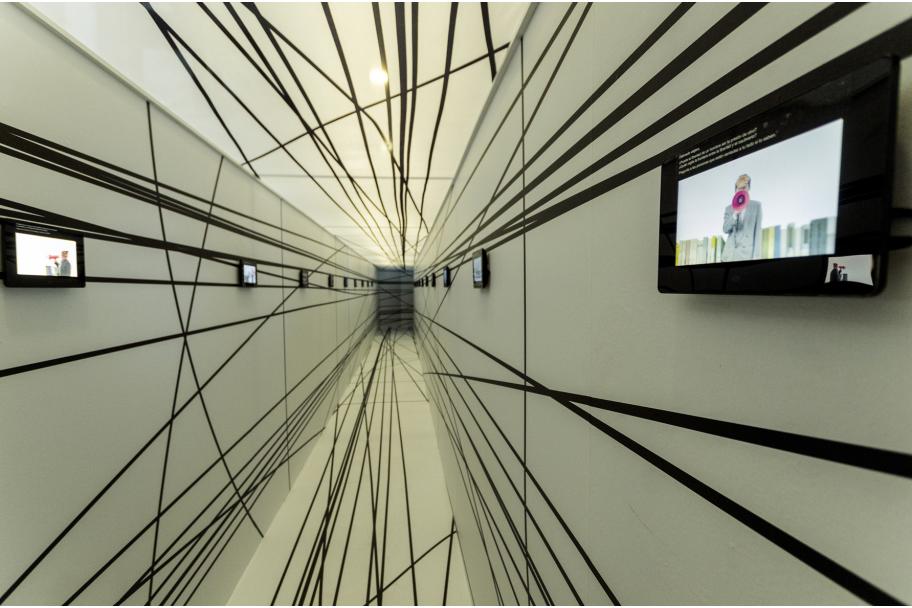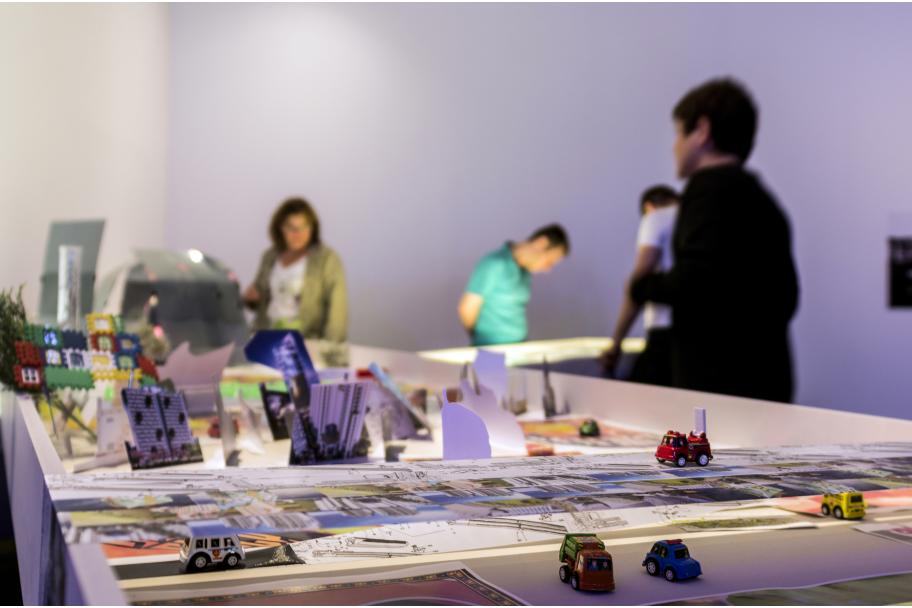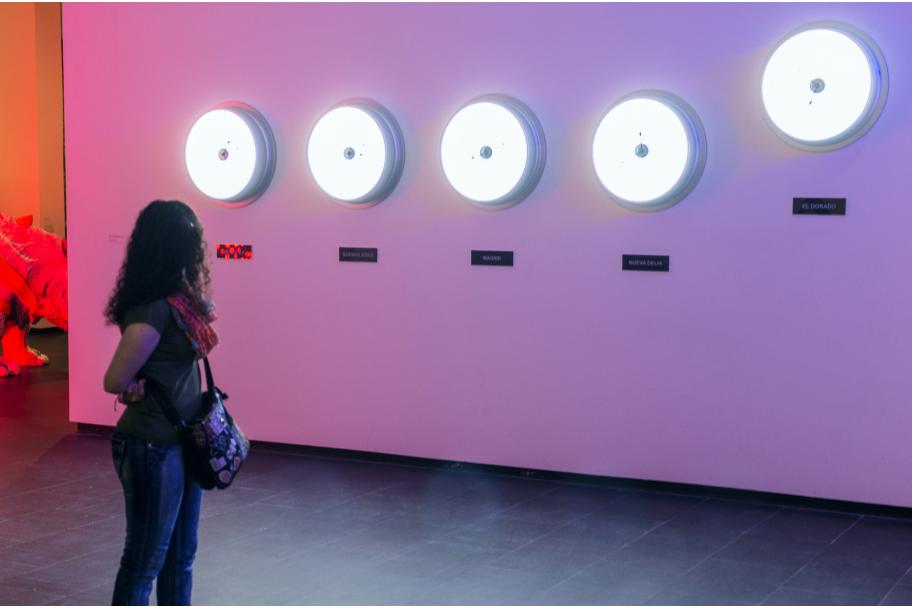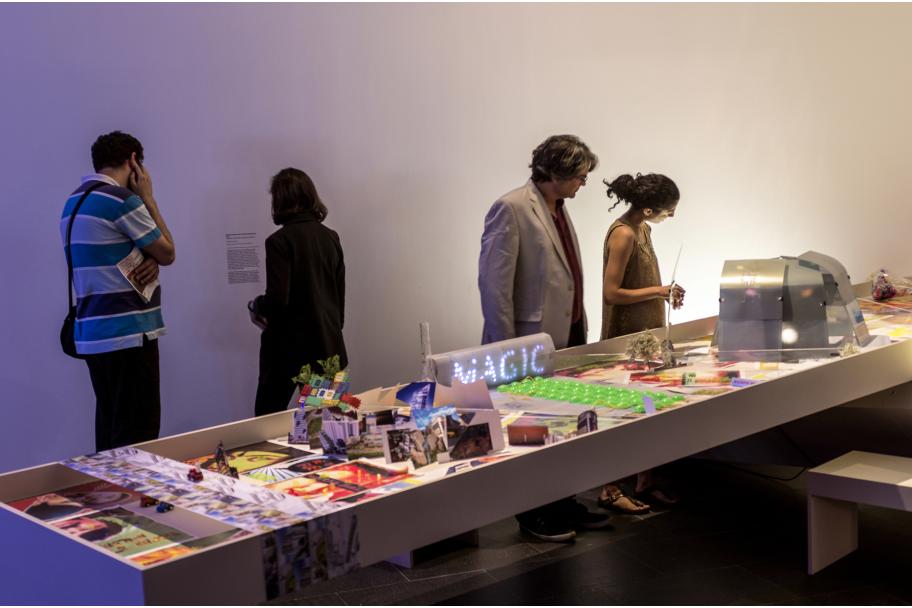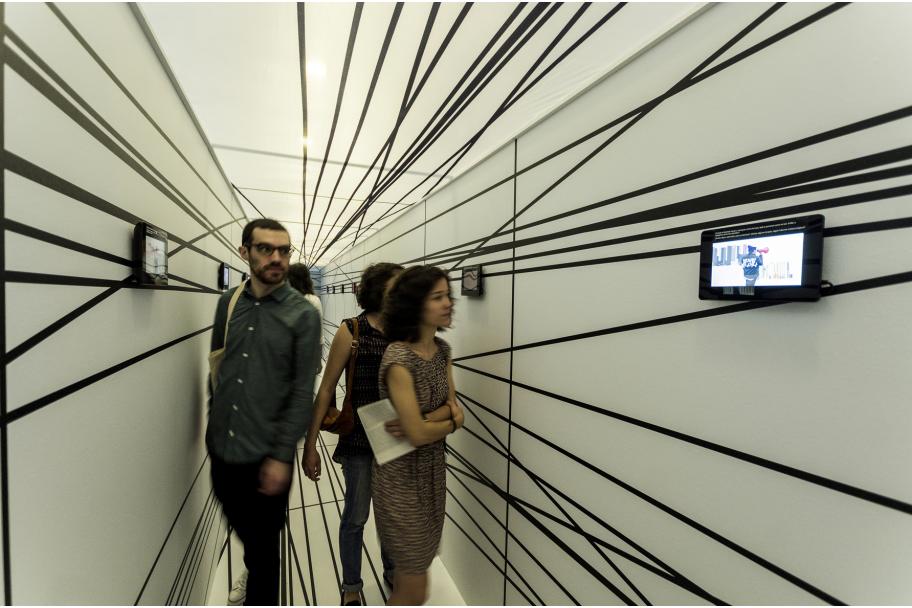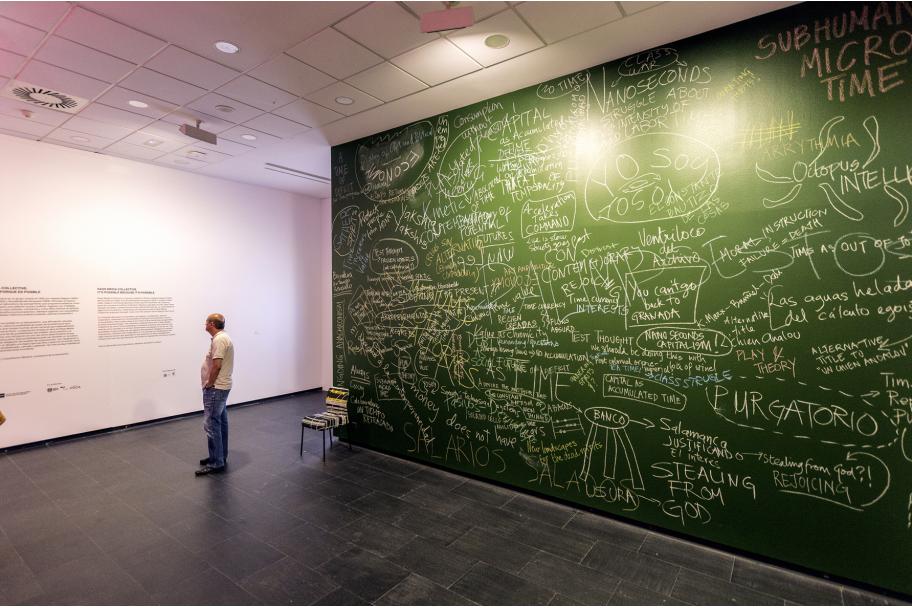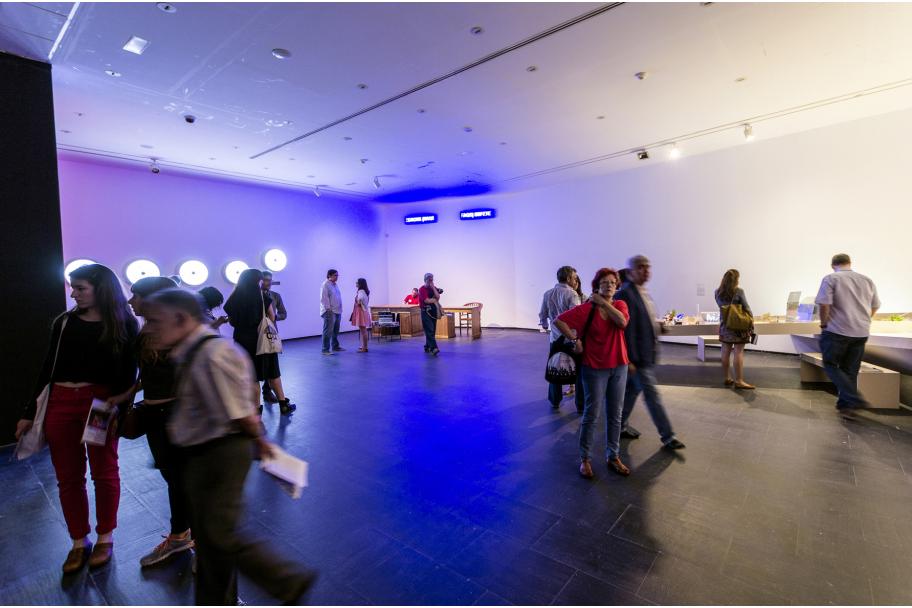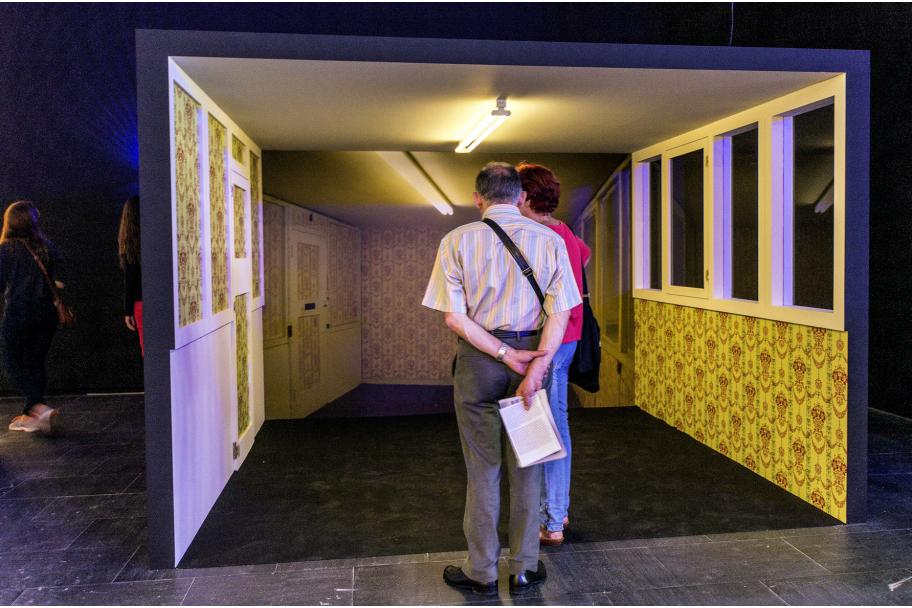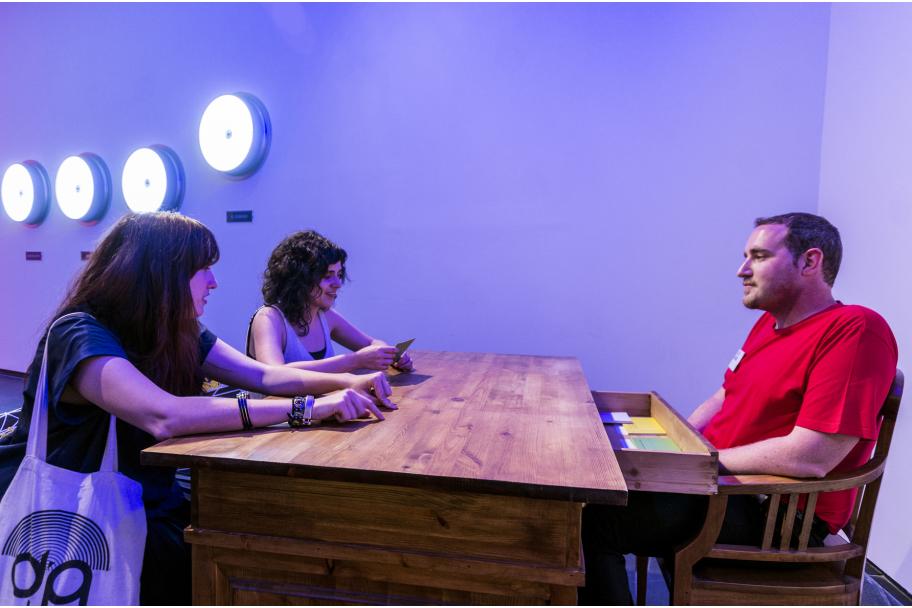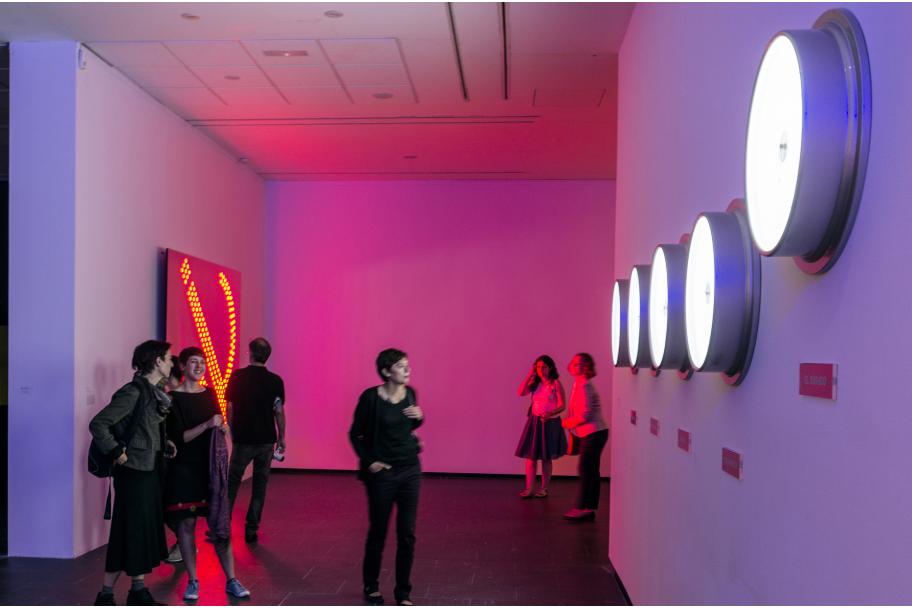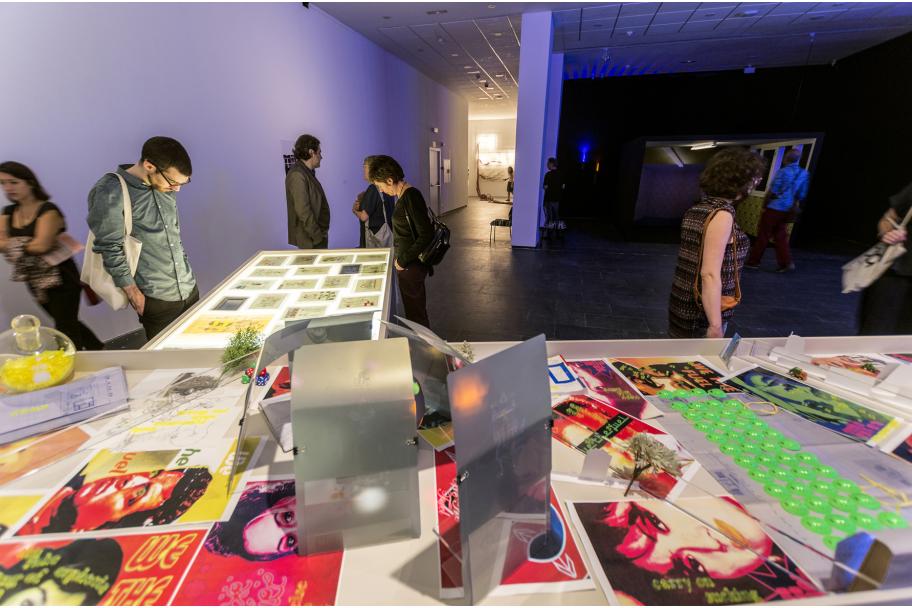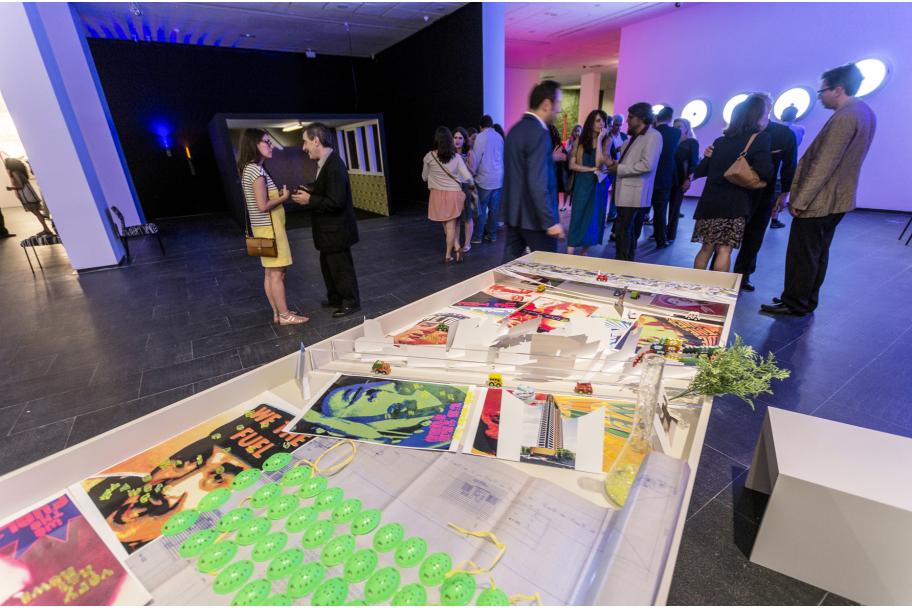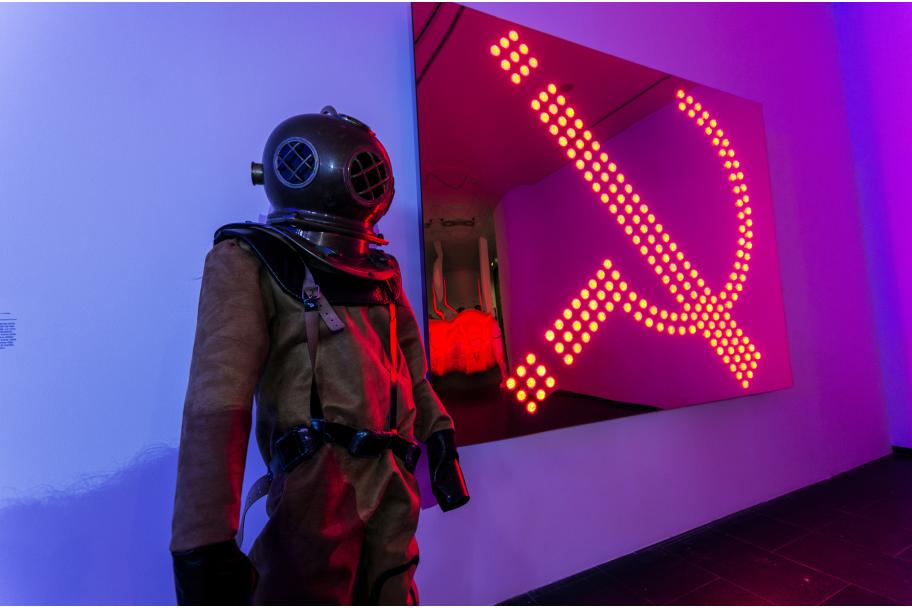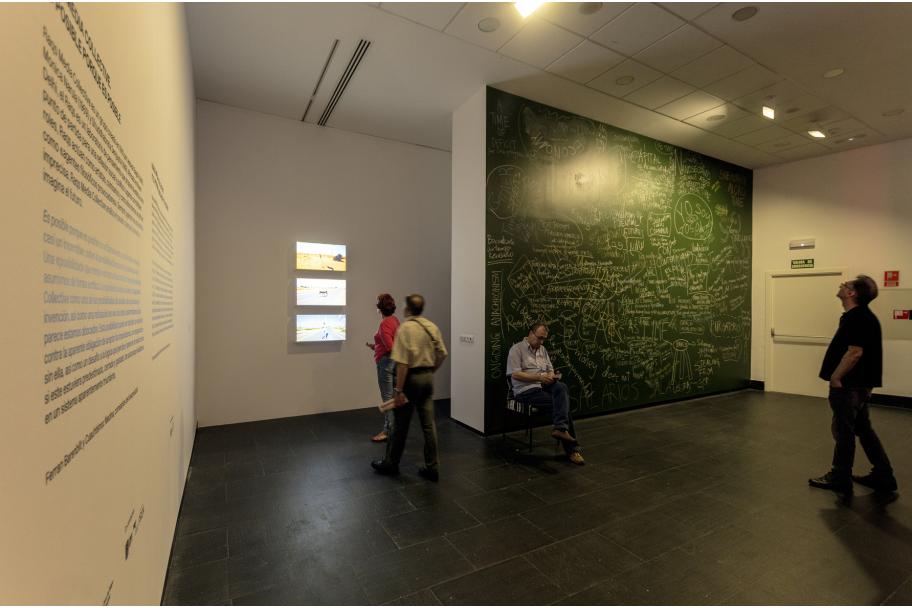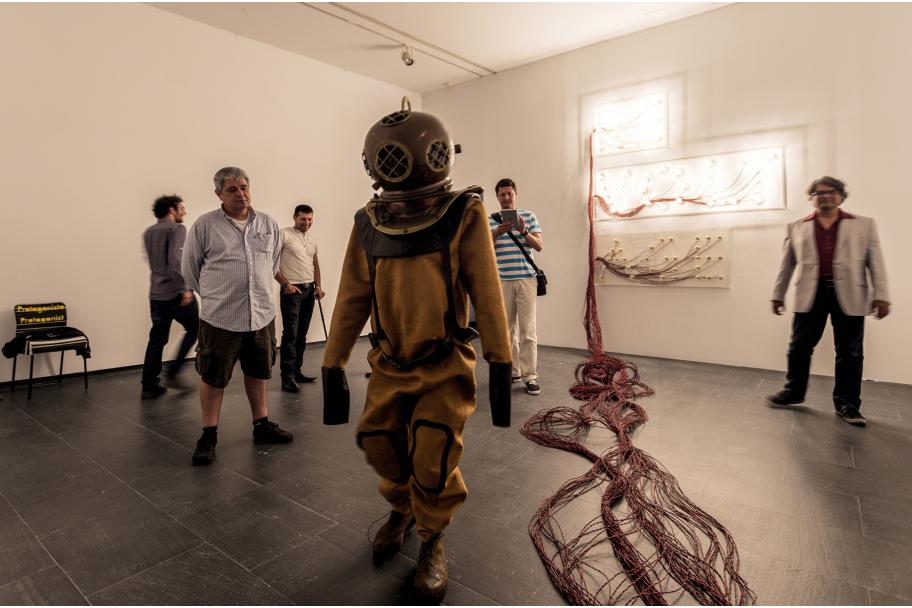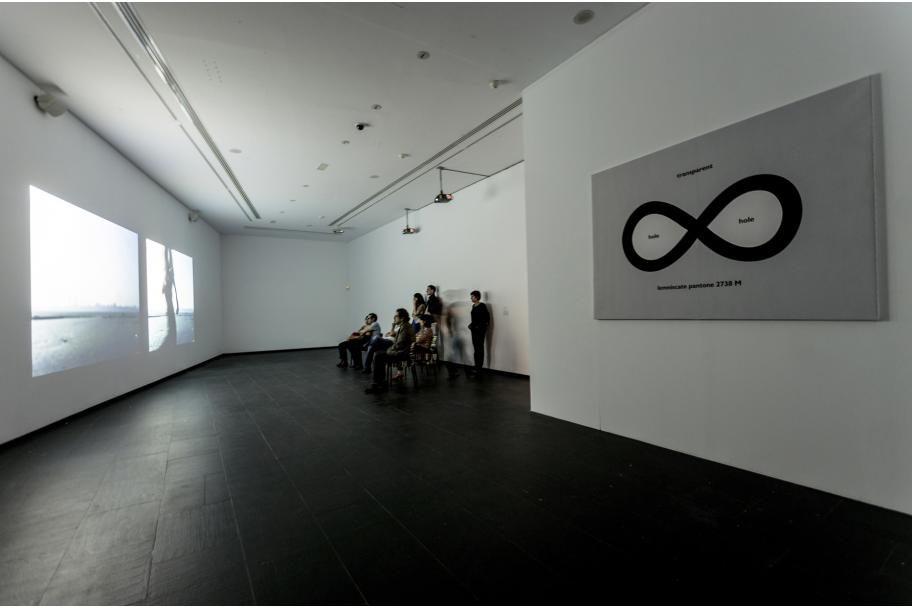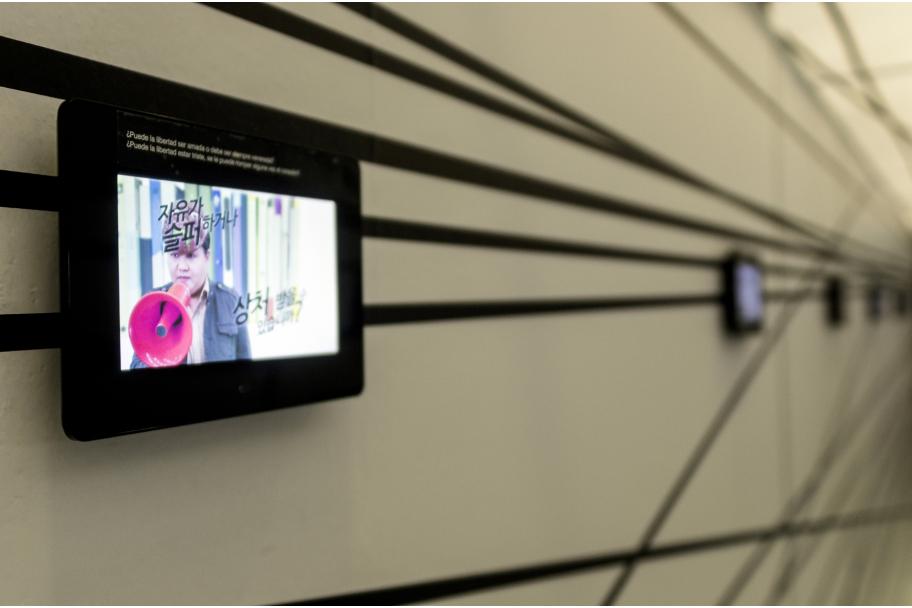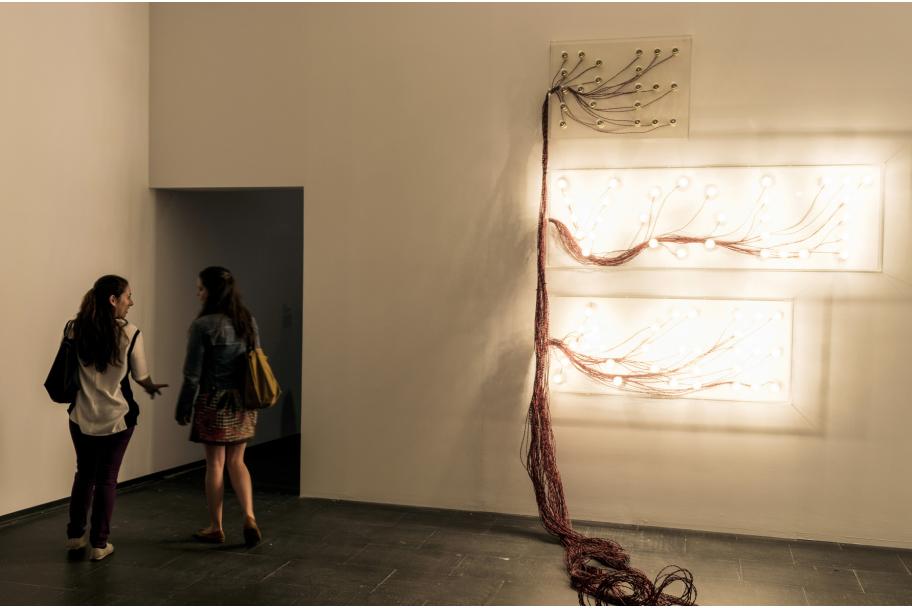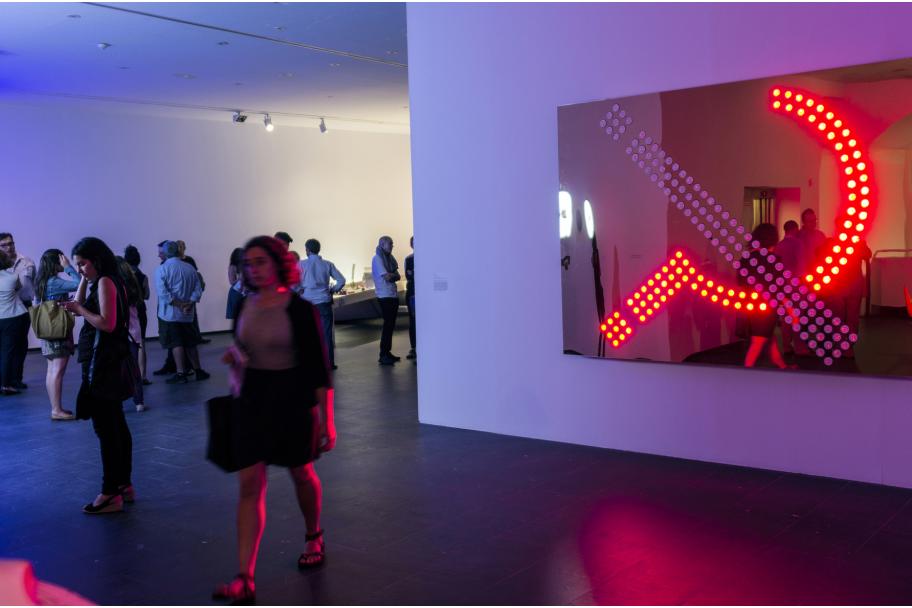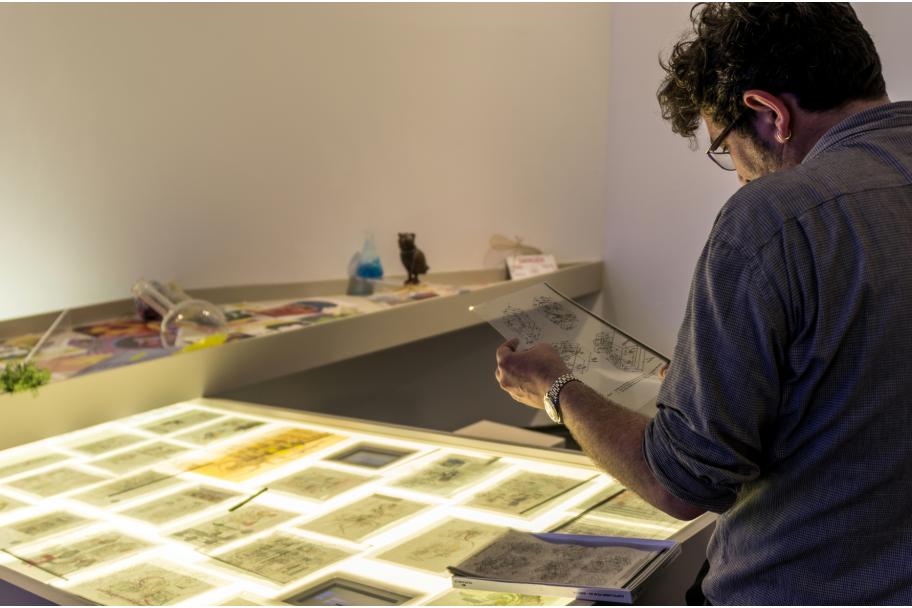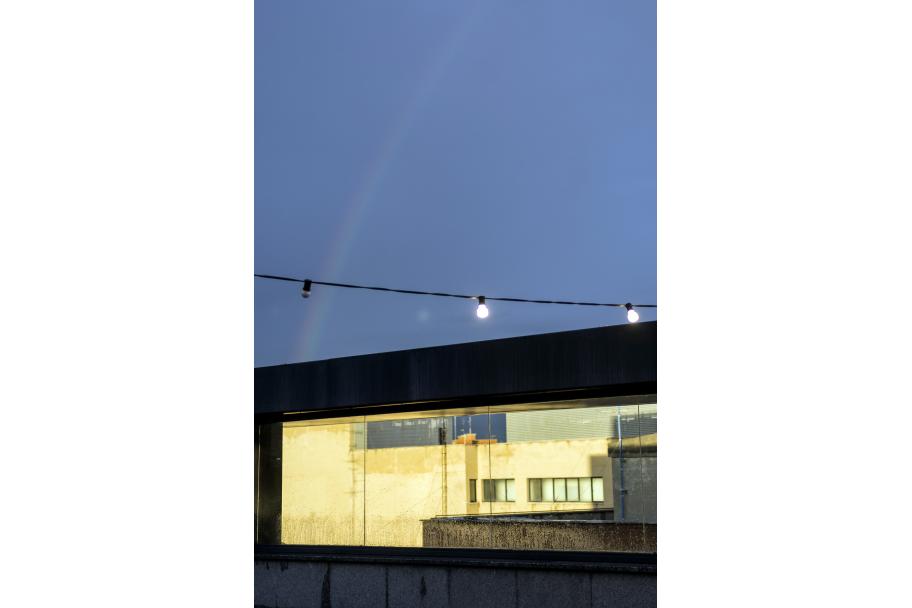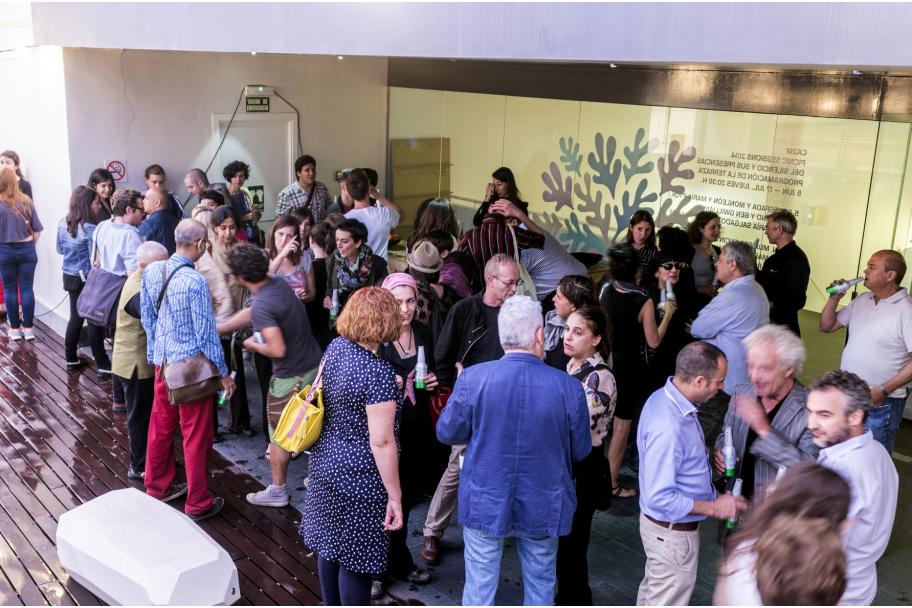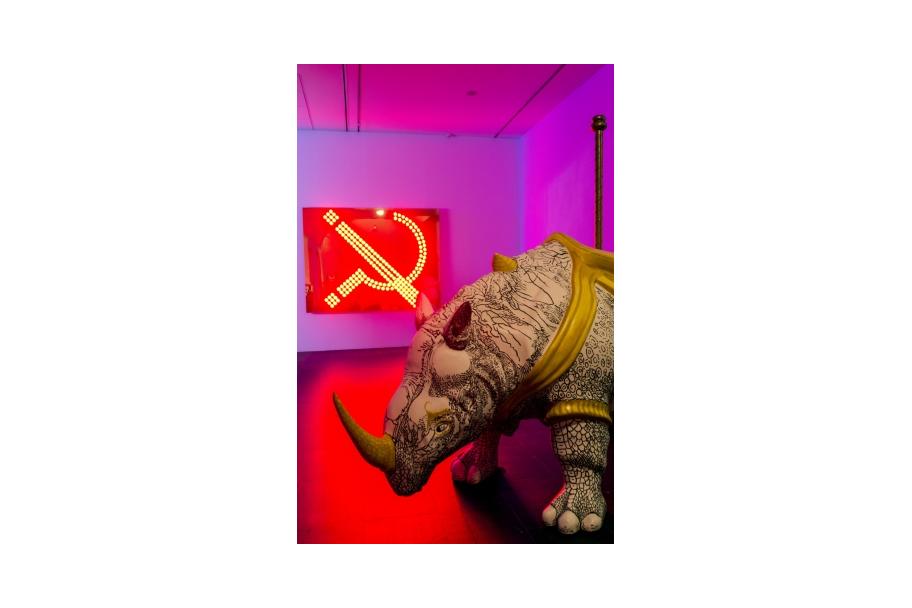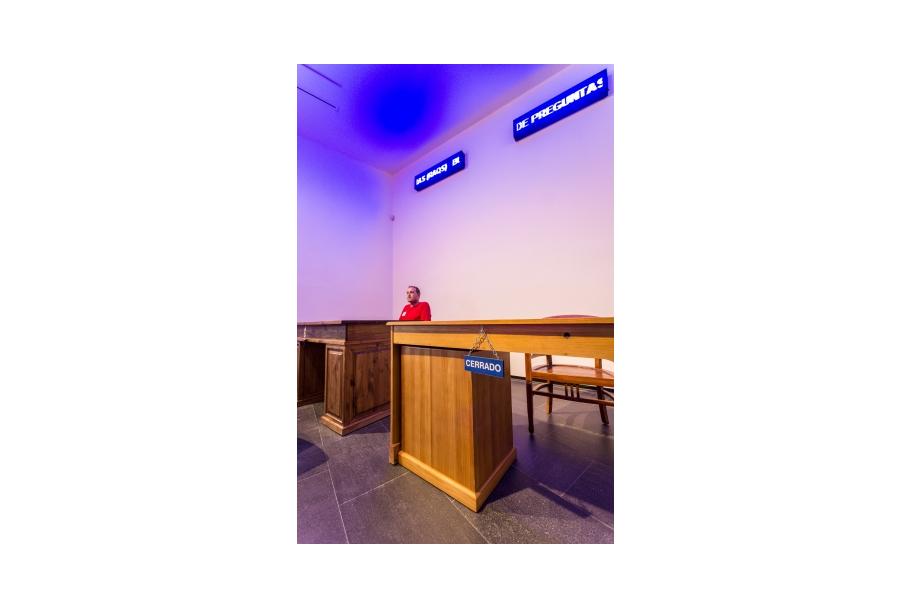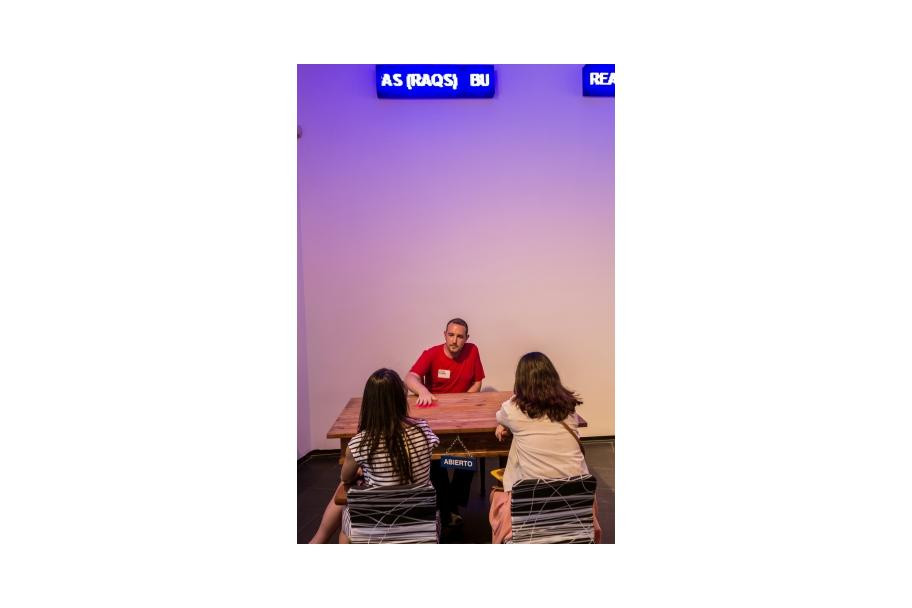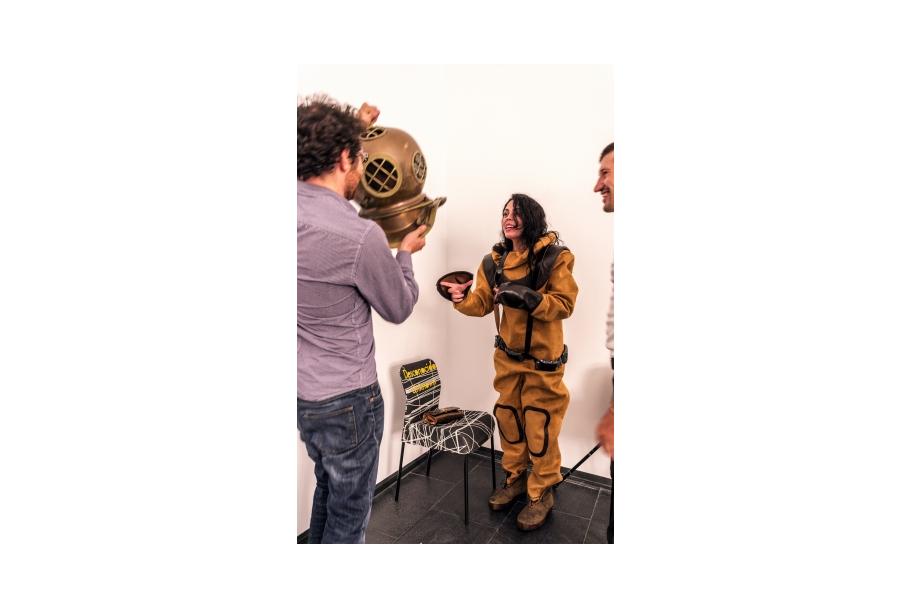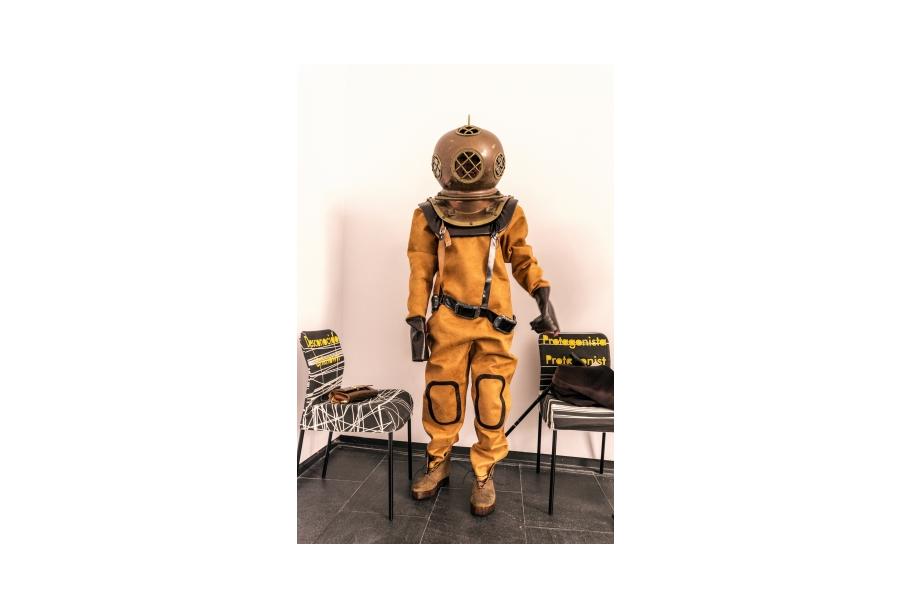- CA2M MUSEUM
- exhibitions
- IT'S POSSIBLE BECAUSE IT'S POSSIBLE
IT'S POSSIBLE BECAUSE IT'S POSSIBLE

It’s Possible Because It’s Possible brings together a series of pieces by Raqs Media Collective, a group of artists created in 1992 by Jeebesh Bagchi (1966), Monica Narula (1969) and Shuddhabrata Sengupta (1968). Located in New Dehli, Raqs Media Collective, is a thinking laboratory that uses the aesthetic as a starting point for social and political reflection. At present, the Raqs collective carries out installations and performances, as well as editorial, curatorial and educational projects through different approaches such as sociology, geography, mathematics, industrial design or urbanism. The origin of its name refers both to the word used in Persian, Arabic and Urdu to define a state of meditation, and to the acronym «Rarely Asked Questions», a wordplay with the better-known FAQs «Frequently Asked Questions»- that we find on so many websites.
It’s Possible Because It’s Possible is an irrefutable statement against a defeatist determinism. This title becomes an appeal or a sort of manifest. Contrary to the non-determination of «I would prefer not to» expressed by Melville in his work Bartleby the scrivener, «It’s possible because it’s possible» is a categorical, almost imperative, statement on the possibility of going from potential to action. For the Raqs collective, possible and probable are distant concepts: that which is imagined might happen, because, in fact, it is already happening once stated. A possibility that breaks away from many of the certainties we generally accept unthinkingly and which lead us along the labyrinth of hegemonic thinking. In line with this, the exhibition analyses the work of Raqs Media Collective as one of the possibilities of practice, criticism and invention, while also constituting a live refutation of a certain determinism that we appear to be set on. This «possibility» also becomes a call to action against the apparent obligation to accept impositions, whether resignedly or not.
In Raqs Media Collective there is a will to extend the universe of discourse by creating tools through imagination and speculation in order to create new ways of thinking and experiencing. Each work, each allegory, each reflection and each image and artefact created by Raqs represents an impulse that is currently necessary: to prevent criticism from being confused with complaints and impotence, to challenge the logic that is perceived and prevails in the world as if predestined, in spite of being closed and worn out, just because we live in an apparently triumphant system. One of the most prominent axes of the exhibition is the question of time, or in other words, how the sequence of events is organised and the systematic regularisation between work, rest and leisure in modernday society. In capitalism, time is a fundamental notion, as it is possibly the only exchangeable currency with a sure value. A value that is directly related to our condition as mortals, meaning therefore, that it is a finite asset.
In the work of Raqs, time is the battlefield that takes place in the body of each worker, as their time is divided between work and leisure, on consuming stimulants such as coffee or tea to survive or adapt to the production machine. For example, the clocks in Now, Elsewhere (Escapement), 2009-2014, explore a division of the day according to hours of affection and desire, and leave the subordination of our organic and emotional lives to a time segmented by mechanical and abstract measures on hold. Similarly, in Revoltage, 2010, time is not an abstract and therefore inoffensive dimension, but rather the scene of the class struggle on both its microscopic level and in planetary terms. In Time Symposium, 2012, Raqs sets the public and the participants the task of reflecting on the vast body of literature and critical texts available that speak of the transient nature of contemporary culture; in fact, it is the underlying theme in the diversity of observations, slogans, illuminations and jokes compiled in Blackboard Economy, 2014.
One of the key pieces of the exhibition is The Capital of Accumulation, 2010, a narrative-film in which Raqs Media Collective inverts the title of the most important study by Rosa Luxemburg, The Accumulation of capital, written in 1913. Luxemburg, apart from being an icon of an alternative democratic revolutionary left wing, constitutes an example of the possibilities of creative, non-dogmatic, thinking. She claims that capitalism is the first and only economy that «tends to swallow the world whole, while eradicating the rest of the economies, without tolerating any rivals by its side». The Capital of Accumulation is a discourse based on Luxemburg’s legacy and it arises from the voices, the matter, the territory and the experiences, as well as the social communities that are domesticated by a dominant system.
In Marks, 2010, a work created for the Oscar Niemeyer building that is the headquarters of the French Communist Party, Raqs uses inversion as a technique as well as a form of irony, to give new meaning to one of the most used and abused symbols in history, the hammer and the sickle, reconverted here into signs of surprise and questioning. Reverse Engineering the Euphoria Machine, 2008, shows how, through the advertising device, and the seduction game inherent to it, a desire for possession and temporary satisfaction is generated that is mistaken for false happiness. A relationship that generates and feeds the impersonal network of the global economy.
Another of the underlying themes of the project is post-colonisation. What does to be cosmopolitan mean as opposed to being colonised? Both concepts appear to drink from the same source, the idea that a condition exists that is determined by the mere fact of belonging to (any) human group. In line with this conviction that all human beings form part of the same community, we run the risk of being flattened by a global capitalism that gives a new significance to the differences on an exclusively market-based plane. How then to be cosmopolitan without being colonised? Both the cosmopolitan and the coloniser are clearly aware that the limit of their sphere of action is the world itself. It is a question of thinking of how to surmount the power hierarchies –whether more of a symbolic nature, in the field of politics, or more real, in the military or financial area-, to generate a more egalitarian dialogue.
In However Incongruous, 2011, Raqs recreates the story of the first rhinoceros to set foot in Europe in modern times, a male sample that abandoned Goa, in India, in 1514 on the way to Lisbon. Exactly 500 years later, the rhinoceros represented here based on the famous etching by Durero, without ever having seen the animal, emerges as an insurgent and persistent reality. Thus the sculpture becomes an artist’s vision based on the vision of another artist, Durero, of something he never saw and could only imagine through the descriptions of Pliny the Elder. The success of this wood engraving was unprecedented: possibly, one of the most influential etchings in history.
Raqs sees reality as a constant field of learning, open to both the FAQs –Frequently Asked Questions-, and the less comfortable RAQs –Rarely Asked Questions-. In its piece Firm of RAQS and FAQS, 2014, the artists installed an information desk at which the public could ask either question type. In Ask the Person Who Sits Next to You, 2012, they even went so far as to do without the middleman. This is perhaps the most ambitious objective that Raqs Collective Media pursues: for each one of us not just to be receivers, but also to become generators and re-distributors of meaning.
TRAVELLING EXHIBITION
MUAC Museo Universitario Arte Contemporáneo, México DF
PARALLEL ACTIVITY
CA2M Tours
Information
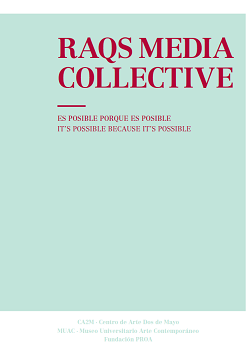
La exposición "Es posible porque es posible" del Raqs Media Collective es una nueva oportunidad de estrechar las relaciones culturales entre España, México y Argentina, algo que siempre es un motivo de satisfacción. Además, plantea una audaz propuesta de reflexión sobre la realidad de la mano de este grupo de artistas indio. A través de su poética, los tres miembros del Raqs —Jeebesh Bagchi, Monica Narula y Shuddhabrata Sengupta— establecen una complicidad con los espectadores para, juntos, iniciar un viaje por la historia del pensamiento actual.
